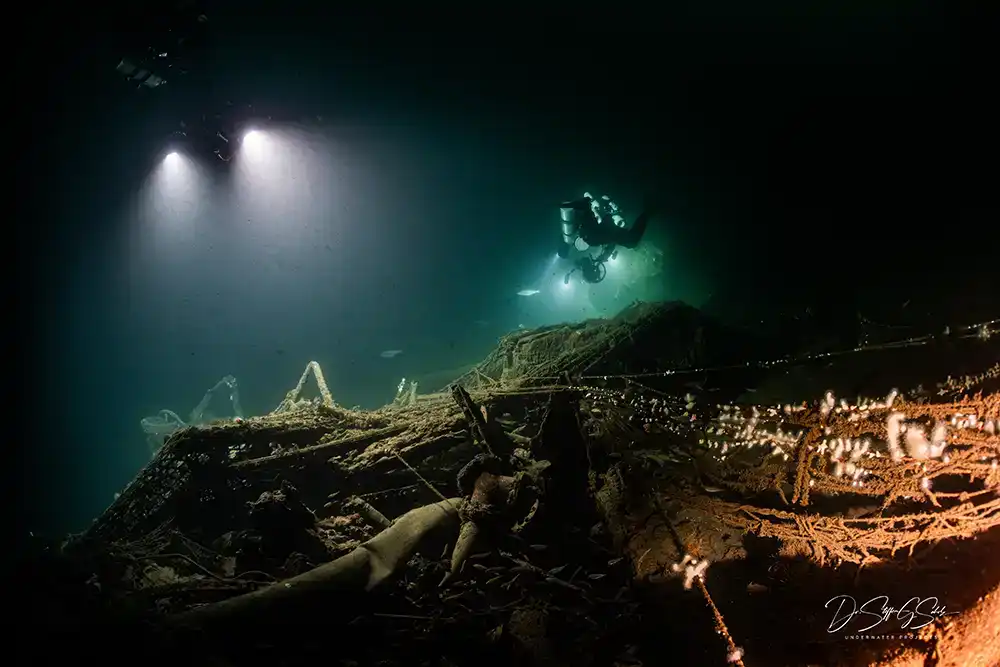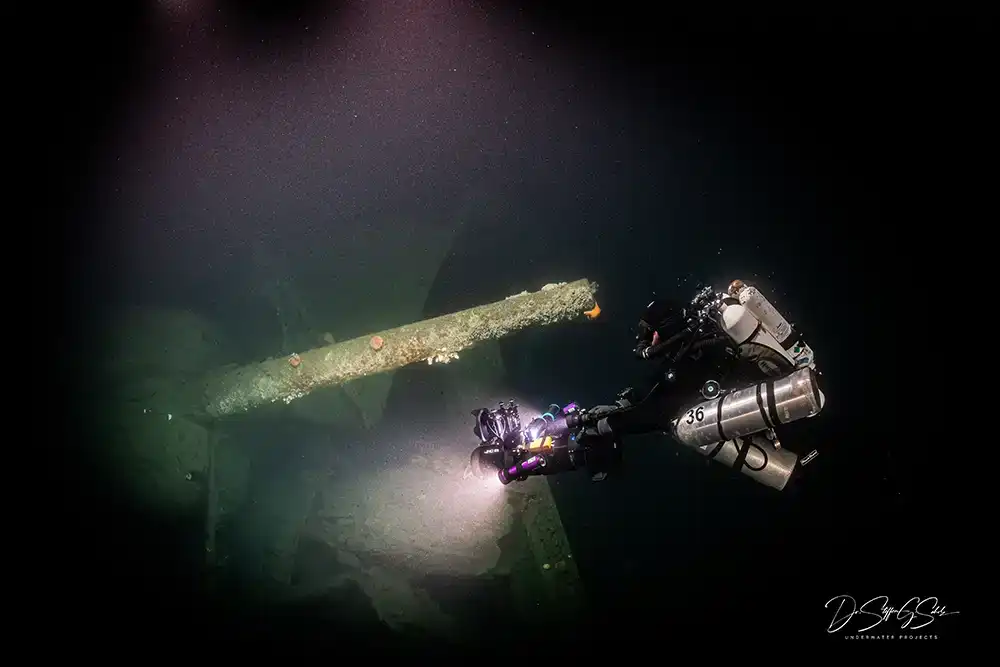
A world staff of technical divers has situated the wreck of Royal Navy warship HMS Nottingham, 110 years after she was sunk by a German U-boat through the First World Battle
Nottingham, a City-class gentle cruiser, was sunk on 19 August 1916 throughout an encounter with parts of the German Excessive Seas Fleet.
Regardless of quite a few makes an attempt to find her, Nottingham was the final remaining ship of that period whose closing resting place remained unknown, making the invention significantly important and bringing closure to surviving descendants of the 38 males killed through the assault.
Working below the banner of ProjectXplore, a staff comprising members from the UK, Germany, the Netherlands, Poland and Spain made the invention after months of in depth analysis of ships’ logs, telegrams and charts.

Finding the 82-metre-deep wreck was a difficult technical dive operation, going down within the North Sea, 60 miles (100km) off the coast of north-east England.
The wreck is remarkably intact with a 45-degree listing to port, full with 9 x 6-inch weapons, the unique wood decking in place, and white dinner plates stamped with a Royal Navy blue crown emblem.
Historical past of HMS Nottingham
HMS Nottingham was a Birmingham-class cruiser, a subdivision of the City-class cruisers, 5 designs of which have been named after British cities and cities: Bristol, Weymouth, Chatham, Birmingham and Birkenhead.
Bigger than destroyers however smaller than battlecruisers, the ‘Cities’ have been long-range scout ships, deployed forward of the British Grand Fleet’s battleships and regarded to be ‘significantly superior to their German opponents.’
Launched in April 1913 and accomplished on 1 April 1914, the 139.3-metre (457ft) lengthy Nottingham was fitted with 9 6-inch weapons, 4 3-inch anti-aircraft weapons and two torpedo tubes.

She noticed motion throughout many of the Naval battles previous to her sinking, together with the 1915 Battle of Dogger Financial institution and 1916 Battle of Jutland, the place she was instrumental in sinking or disabling a number of German vessels.
On 18 August 1916, two months after the Battle of Jutland, the British Grand Fleet was despatched to intercept the German Excessive Seas Fleet (a lot of which might later be scuttled at Scapa Movement), which had been ordered to bombard town of Sunderland, in north-east England.
A German U-boat was noticed manoeuvring into place early the following morning, however hazy situations led to it being misidentified as a small fishing boat, and the Grand Fleet fell into the German’s ambush.
Nottingham was hit by two torpedoes fired from U-52, which left her with out energy, however nonetheless afloat. Twenty-five minutes later, nonetheless, she was struck by a 3rd, and started to sink.
Many of the 480-man crew managed to achieve the lifeboats or have been rescued by two destroyers that arrived on the scene, however 38 males have been misplaced; solely three of whom have been ever recovered from the ocean.

Discovering HMS Nottingham
The ProjectXplore staff started researching the wreck of HMS Nottingham in September 2024, with a number of visits to the Nationwide Archives, Nationwide Maritime Museum and Imperial Battle Museums in London, and the UK Hydrographic Workplace (UKHO).
The analysis lined each British information and people of the Imperial German Navy – together with U-52’s personal information – plus information from fishing vessels that go to the realm, who usually mark shipwrecks as websites of attainable entanglement.
After eight months of preparation, the staff headed out in April 2025 to conduct sonar surveys of the realm the place they believed Nottingham to be situated.
After finishing the primary survey with out success, the staff checked an uncharted fisherman’s mark simply outdoors the search space, the place they discovered the unmistakable traces of a giant warship.

Primarily based on the measurements taken by the sonar, the wreck was a precise match for Nottingham’s dimensions, and additional surveys revealed the ship to be sitting with a 45-degree listing to port, with a lot of her superstructure nonetheless intact and her 6-inch weapons clearly seen.
On 16 July 2025, following three months of preparation, the staff set off to dive the wreck, descending straight onto two of the 6-inch weapons, which they discovered intact with unspent shells close by.
On approaching the strict of the vessel, the identify of the ship was instantly obvious, and the staff discovered a lot of the wood decking nonetheless in place. Additionally they situated the 4 funnels and located a variety of white plates stamped with a Royal Navy blue crown emblem.
In the direction of the bow, ahead of the bridge, they discovered the blast harm from the torpedoes, a few of the hull’s 3-inch armour plating ‘peeled open’.
The invention of the final misplaced warship of the First World Battle is a large discover for Naval historians and is described in ProjectXplore’s expedition report as ‘with out query the very best preserved City-class cruiser on this planet.’

Falmouth, nonetheless, now a well-liked dive website, sits in simply 16m of water off the coast of Flamborough Head in Yorkshire and was closely salvaged after the battle.
As a chosen battle grave, the discover additionally brings closure to the descendants of the 38 males who misplaced their lives, and completes the lacking information of the British Royal Navy.
‘Given [Nottingham’s] distinctive historic significance, her wonderful state of preservation, and standing as the ultimate resting place of 38 British sailors,’ writes the ProjectXplore staff, ‘we consider it is very important comply with due course of for reporting discoveries of this nature.
‘Accordingly, the Royal Navy has been notified.’

An in depth journey report produced by ProjectXplore, written by staff members Leo Fielding and Dan McMullen, is obtainable at this hyperlink. For extra from ProjectXplore, go to the staff’s Fb Web page.

